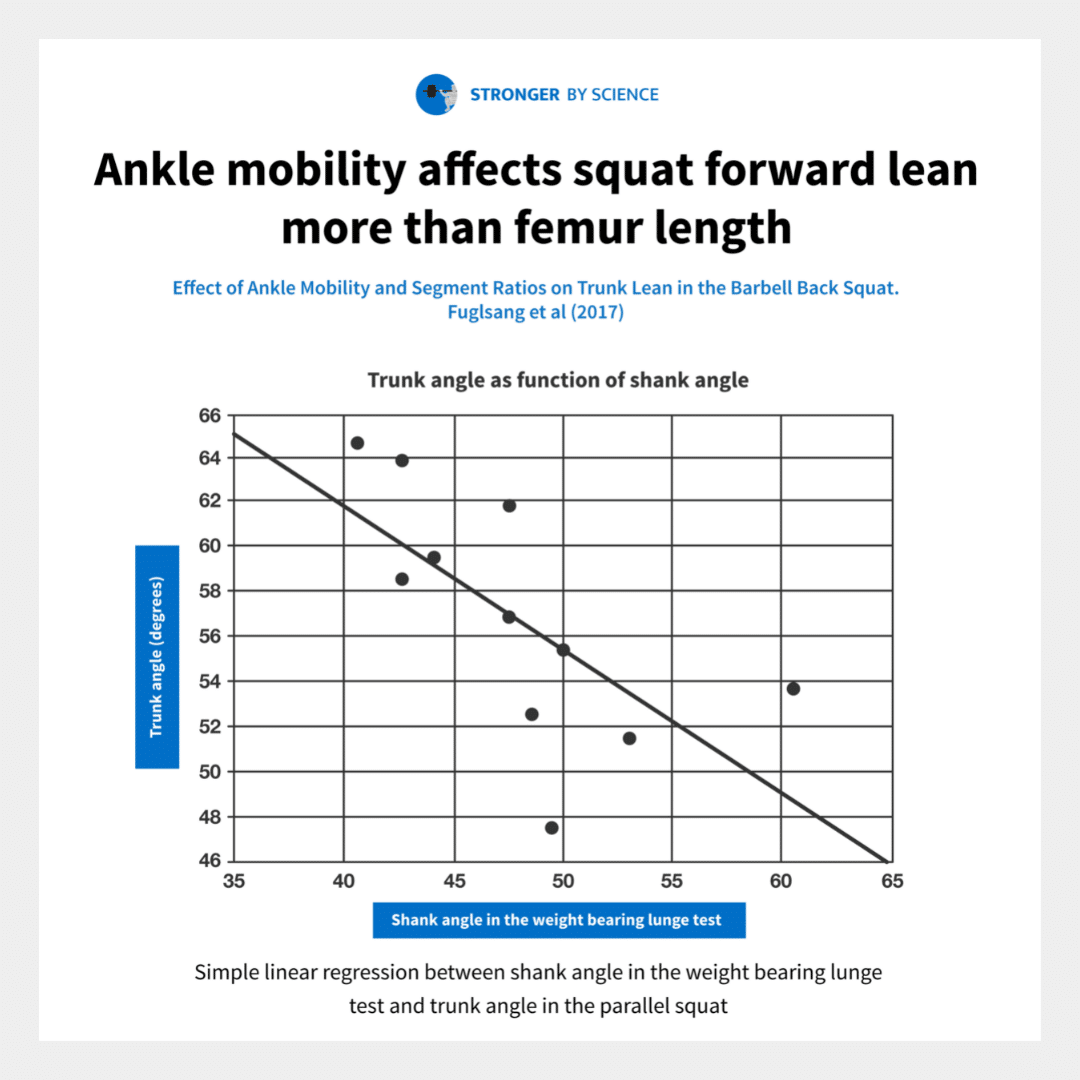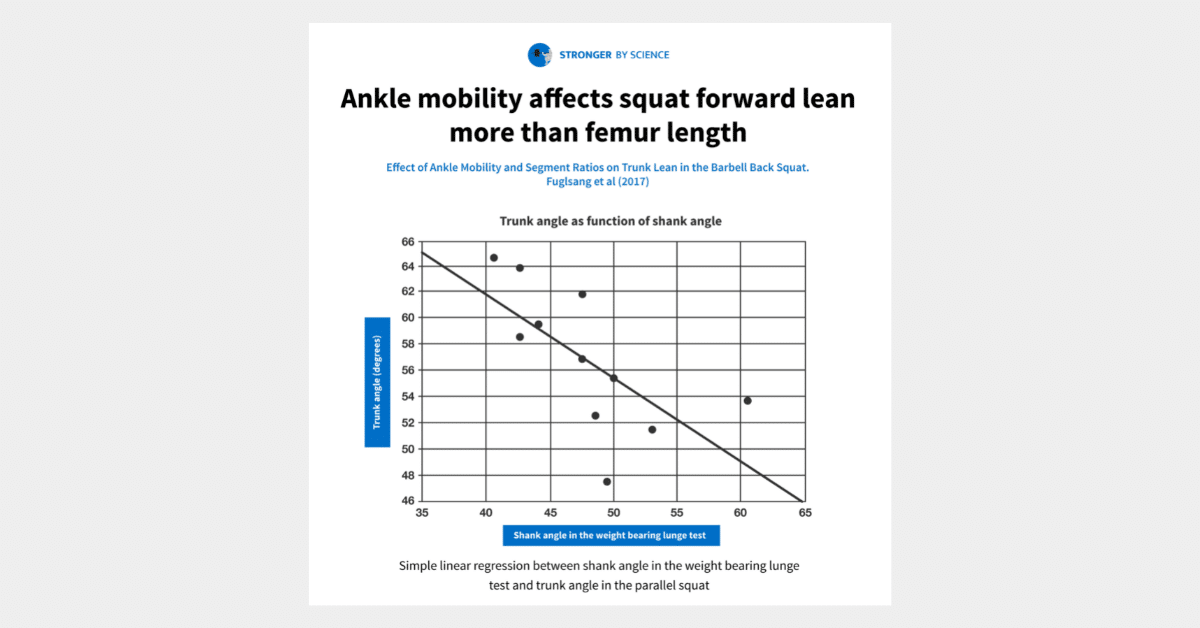What should you do if you want to reduce your forward lean in the squat?
We’ve addressed “good morning squats” several times at Stronger By Science – forward lean increasing substantially when you squat really heavy or you approach failure during a set of squats.
A separate but related “issue” is simply always squatting with a lot of forward lean. I put “issue” in quotation marks, because squatting with a lot of forward lean isn’t inherently a problem. However, lots of people want to squat with a more upright posture for a variety of reasons. Maybe they have an injury that’s exacerbated by squatting with more forward lean, maybe a more upright squatting posture better mimics positions they’d experience in the sport they play, maybe they’re a weightlifter who’s squatting primarily to improve clean and snatch performance (which require a more upright posture), etc.
When people discuss forward lean in the squat, body proportions are almost always top-of-mind. All else being equal, long femurs relative to torso and shank length should increase the amount of forward lean you squat with. However, a 2017 study by Fuglsang and colleagues suggests that body segment lengths matter far less than ankle mobility. That study found that ankle dorsiflexion in the squat was significantly positively associated with ankle mobility during a standing test of dorsiflexion mobility (the weight bearing lunge test), and that dorsiflexion range of motion was significantly negatively associated with forward lean in the squat. However, a multiple regression model including all body segment length ratios (trunk:thigh, trunk:shank, and thigh:shank ratios) did not significantly predict forward lean in the squat. Furthermore, dorsiflexion range of motion alone explained 45% of the variance in observed forward lean; adding all body segment length ratios into a multiple regression model that also contained dorsiflexion range of motion only increased the variance explained by 15%.

Thus, while body segment lengths logically must influence forward lean in the squat when all else is held equal, in the real world, ankle mobility seems to have a far larger impact on forward lean in the squat. If your normal squat technique involves more forward lean than you’d prefer, improving ankle mobility or squatting with a raised-heel shoe may help you out. Alternatively, a slightly wider stance and a greater focus on getting your knees out (hip abduction) may help as well.
This study was discussed in more detail in Volume 2, Issue 1 of MASS.




